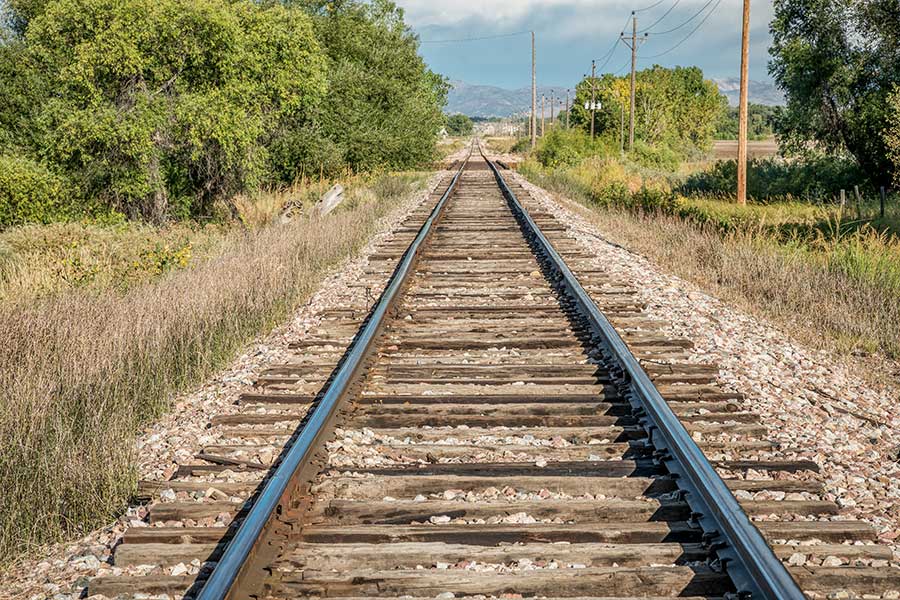What is Parallel Utility Encroachment and How to Successfully Navigate an Application with a Railroad
If you’re running into any complications when dealing with parallel utility encroachment for your utility project, rest assured you are not alone. This tends to happen when the codes, laws, and regulations of right-of-way encroachments vary from state to state and railroad to railroad, meaning things can get complicated in a hurry. The easiest way to navigate a parallel utility encroachment on a railroad right of way is to hire a consultant to help you find the correct information and work your way through this complex process. But no matter which path you chose – to go it alone or to make it easy on yourself – here’s what you need to know beforehand.
What is Parallel Utility Encroachment?
To begin with, an encroachment is a structure or facility that “enters the railroad company’s right of way and either does not leave the right of way or follows along the right of way for some distance.” This is different from a crossing in that crossings go from one side of the railway’s real estate to the other in as close to a straight line as possible. You can think of it as driving alongside railroad tracks (encroaching) versus driving over them (crossing).
With that in mind, it only makes sense that most encroachments run parallel to a railway’s right of way (and, in most cases, to the tracks as well). Were they to run perpendicular to the tracks, they would likely be crossings. So, is the term “parallel encroachment” redundant? No. It’s just a very, very specific description, which is both a good habit and a business necessity when dealing with utility applications and permits.
What makes the term even more specific is the third word: Utility. A parallel encroachment can include “any tower, pole, pole line, pipe, pipeline, fence, billboard, stand or building, or any structure, object of any kind or character…or special event, which is in, under, or over any portion of the…right-of-way,” but a parallel utility encroachment is specific to a utility facility, such as managing projects around a wireline or pipeline. This can include tasks like a cable or telecom company installing fiber optic cable in the older parts of town or a city expanding pipes to bring water service to housing developments in the newer parts of town.
Where to Begin — The Application Process
Assuming you have extensive plans and documentation in place for your project, your next step is to search for the proper authorization entities and make sure your applications are in compliance. In short, you need to get the railway’s permission to encroach on their right of way and may also need to get permission from any other railroad operating over that specific right of way. As mentioned above, this process varies both by state and by the railway company, with different regulations, definitions, and fees required.
Unfortunately, unless you’re hiring a utility permit consulting firm to fast-track the process for you, there’s no uniform way to do this. Some steps you can take on your own include:
- Googling state railway laws and ordinances as well as the railway company that owns the real estate and those railroads that have operating rights over the property your company needs to access.
- If you don’t know or can’t find any of these, a quick phone call or a trip to town or city hall might be in order.
- Deeds can often be obtained via public records or county offices.
- You can also try this site which offers manager contact details — just be sure to select Utilities/Drainage/Right of Way and then select the state where your project will take place.
In best case scenario, you’ll find the government and corporate entities you’re looking for. They will have websites with clear-cut instructions on how to apply for parallel utility encroachment permits. Many do a fine job of outlining the process, including explaining requirements like fees — both expected and unexpected. Once your permits are in place, your parallel utility encroachments can proceed if approved. If your application is denied, you should consider hiring a consulting firm to cross the t’s and dot the i’s, so your project has the most potential for success.
What if I’m still stuck?
If your search results are still clear, it’s probably a good idea to speak with a utility permitting consulting firm like RailPros to make sure your permits are approved, your time to project is streamlined, and your overhead is reduced. Email us at [email protected] to see if RailPros can help with your upcoming projects.
If you’re running into any complications when dealing with parallel utility encroachment for your utility project, rest assured you are not alone. This tends to happen when the codes, laws, and regulations of right-of-way encroachments vary from state to state and railroad to railroad, meaning things can get complicated in a hurry. The easiest way to navigate a parallel utility encroachment on a railroad right of way is to hire a consultant to help you find the correct information and work your way through this complex process. But no matter which path you chose – to go it alone or to make it easy on yourself – here’s what you need to know beforehand.
